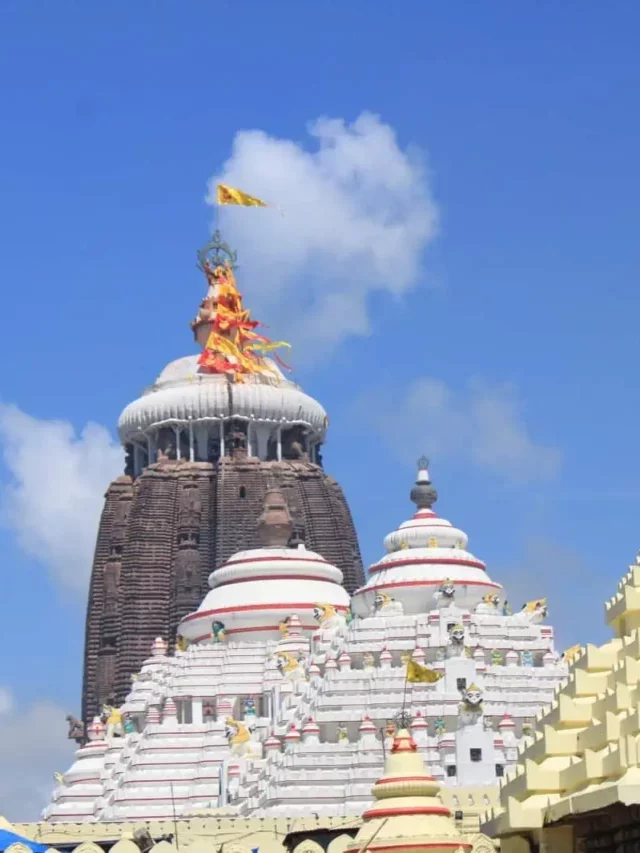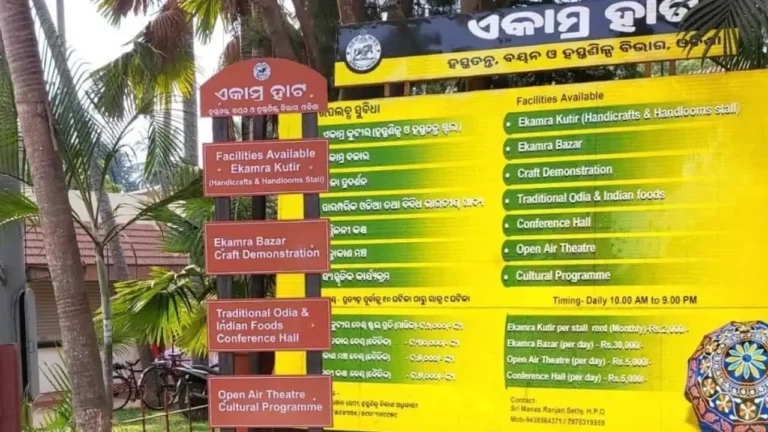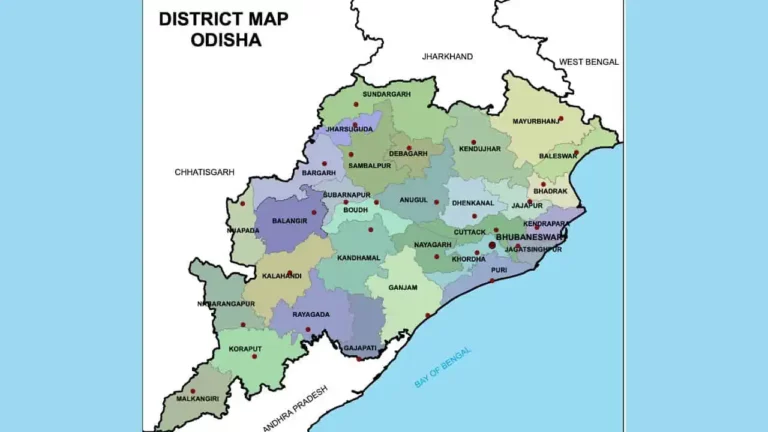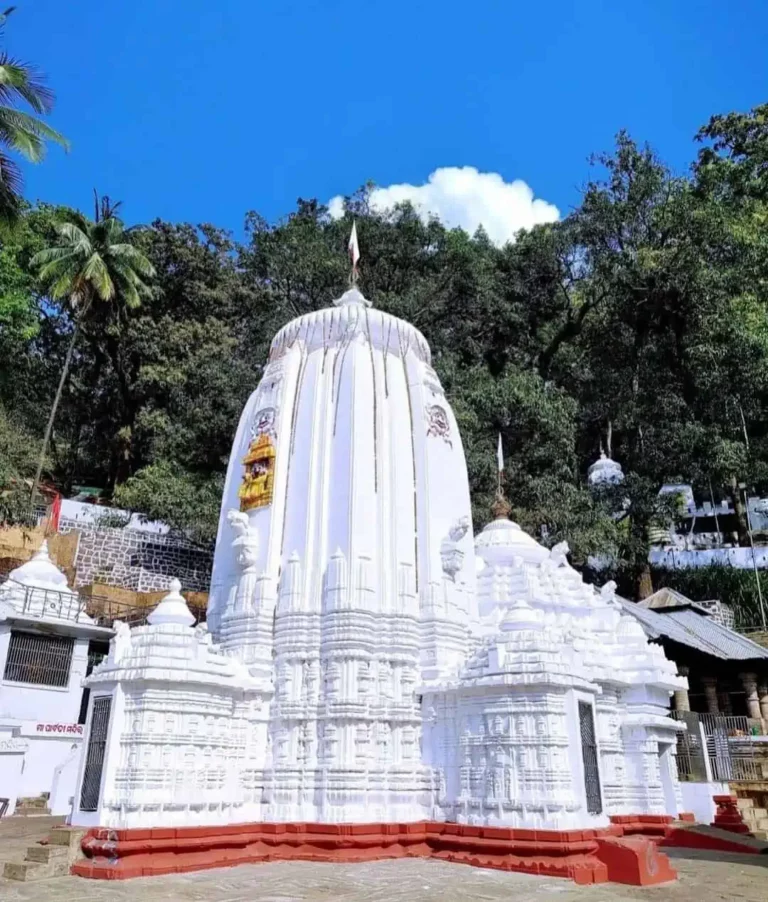Shree Jagannath Temple in Puri Darshan Timings, History, Facts, Photos, and Mystery
One of the four Dhams in India, the Shree Jagannath temple in Puri, is dedicated to Lord Jagannath. This ancient and sacred temple is a true gem of the country, steeped in rich history, fascinating facts, and intriguing mysteries that continue to baffle visitors and locals alike.
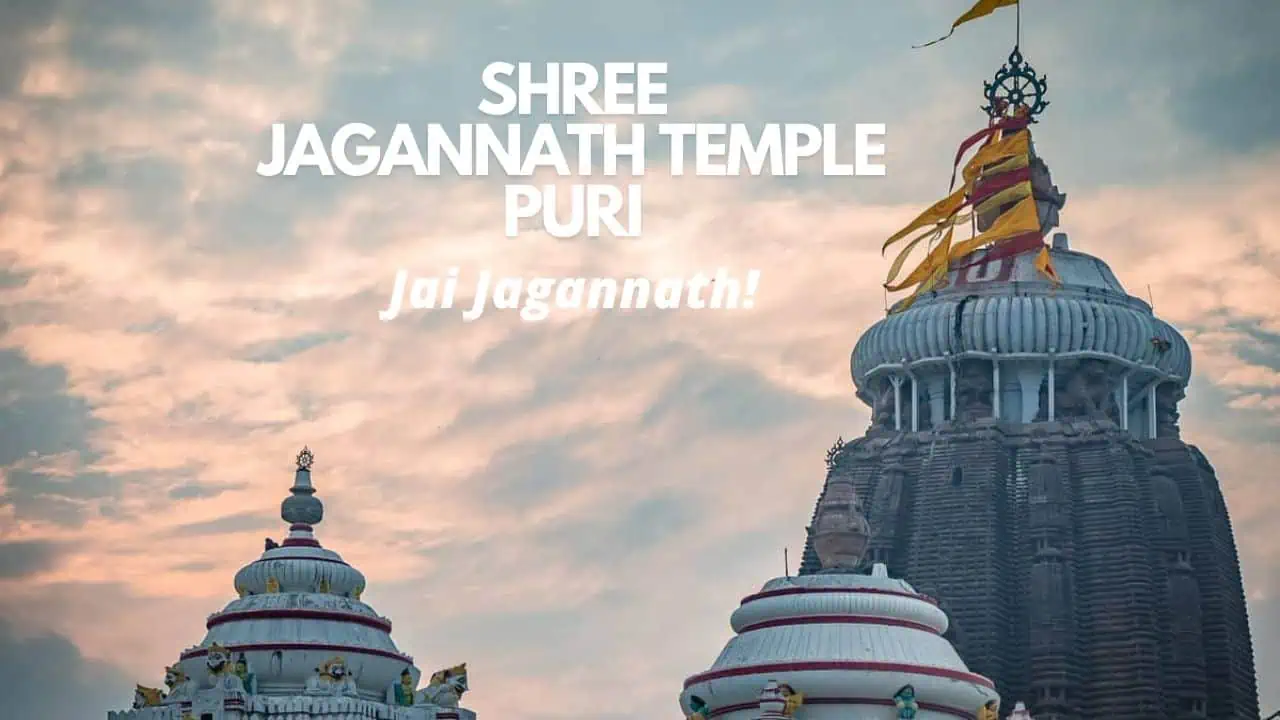
In this article, we invite you to discover the enchanting world of the Shree Jagannath Temple in Puri, from its captivating history and awe-inspiring architecture to its mysterious rituals and darshan timings.
We’ve also included stunning photos of the temple, Shree Jagannath Temple in Puri Darshan Timings, History, Facts, Photos, and Mystery.
Consider reading Jagannath Rath Yatra Festival
Puri Jagannath Temple Darshan Timings
| Days | Temple Darshan Details | Temple Darshan Timings |
|---|---|---|
| Mon to Sun | Morning Hours Darshan | 05:00 to 13:00 |
| Mon to Sun | Evening Hours Darshan | 16:00 to 23:00 |
Puri Jagannath Temple Pooja Timings
| Days | Pooja Name | Pooja Timings |
|---|---|---|
| Mon to Sun | Dwara Phita | 02:00 to 02:30 |
| Mon to Sun | Bhitara Sodha | 02:30 to 02:40 |
| Mon to Sun | Mangala Aarti | 02:40 to 02:45 |
| Mon to Sun | Mailama | 02:45 |
| Mon to Sun | Tadapa Lagi | 03:15 |
| Mon to Sun | Abakasha | 04:00 |
| Mon to Sun | Mailama, Besha | 05:00 |
| Mon to Sun | Rosha Homa | 04:10 |
| Mon to Sun | Surya Pooja | 04:40 to 05:00 |
| Mon to Sun | Dwara Pala Pooja | 05:00 |
| Mon to Sun | Gopala Ballav | 05:30 |
| Mon to Sun | Sakala Dhupa | 06:00 to 07:00 |
| Mon to Sun | Mailama O Besha | 07:30 to 08:15 |
| Mon to Sun | Bhoga Mandap | 07:00 to 08:30 |
| Mon to Sun | Madyana Dhupa | 09:00 to 10:00 |
| Mon to Sun | II Bhoga Mandap | 09:30 to 11:00 |
| Mon to Sun | Dakhinighara Bhoga | 11:00 |
| Mon to Sun | Madhyanha Pahudha | 11:00 to 13:00 |
| Mon to Sun | Mailama, Besha | 18:30 to 19:20 |
| Mon to Sun | Sandhya Aarti | 19:30 to 20:00 |
| Mon to Sun | Sandhya Dhupa | 20:00 to 21:30 |
| Mon to Sun | Mailama O Chandan Lagi | 21:30 to 22:00 |
| Mon to Sun | Badasinghara Besha | 23:00 to 23:30 |
| Mon to Sun | Badasinghara Bhoga | 23:30 to 24:00 |
| Mon to Sun | Ratra Pahuda | 24:00 |
| Mon to Sun | Temple closing Hours | 24:00 |
Puri Jagannath Temple History
The Puri Jagannath Temple, steeped in ancient history, is believed to have originated in the 12th century, resonating with centuries of devotion and spiritual significance. Rooted in legend and faith, the temple’s origins are as mystical as they are revered.
Legendary Foundations:
- King Indradyumna’s Vision: The temple’s inception is attributed to King Indradyumna, a fervent devotee of Lord Vishnu. As per legend, the king was guided by a divine vision in his dreams, which set him on a quest to find the deity.
- Discovery of the Sacred Statue: His journey culminated in the discovery of a sacred tree, where he found the deity manifested in a wooden statue. This momentous finding marked the beginning of the temple’s storied history.
Establishment of the Shrine:
- Creation of the Temple: Moved by his divine encounter, King Indradyumna commissioned the construction of the temple to enshrine the sacred statue, laying the foundation for what would become one of India’s most revered religious sites.
- Evolution Over Centuries: Through the ages, the temple has undergone numerous renovations and expansions, each phase contributing to its grandeur and significance.
Today, the Puri Jagannath Temple stands as a symbol of timeless devotion and spiritual heritage, attracting millions of pilgrims and visitors from around the world. Its rich history and sacred lore continue to captivate the hearts and minds of those who walk through its hallowed halls.
SEO Improvement Analysis:
Puri Jagannath Temple: Shreekshetra
Puri, also known as Shreekshetra, holds a distinguished place in the spiritual landscape of India. Revered as the eternal dwelling of Lord Jagannatha, this pilgrimage site, nestled along the shores of the Bay of Bengal in Odisha, is celebrated as one of the holiest destinations in the country.
Spiritual Significance and Ancient References:
- Purushottama-kshetra: Puri is often referred to as Purushottama-kshetra, named after Lord Jagannatha, also known as Lord Purushottama. This nomenclature finds its roots in ancient texts like the Skanda Purana and the Brahma Purana.
- Symbolic Representation: The city of Puri is symbolically depicted as the ‘body’ (Bapuh) of Lord Jagannatha, emphasizing its deep spiritual connection with the deity.
Skanda Purana’s Glorification of Puri:
- The Skanda Purana extols the sanctity of Purushottama-kshetra with profound reverence. It articulates that although Lord Jagannatha is omnipresent and the origin of all, and there exist numerous sacred places that absolve sins, Puri stands supreme.
- The Purana eloquently states, “Although Lord Jagannatha is all-pervading and is the source of all, and there are also other holy places that destroy all sins, yet this holy place is superior as it has become the body of this Supreme Being.”
- Further, it declares, “He Himself is present there, assuming a form, and has indeed made that place known by His own name.” (Utkala-khanda, Chapter 1, verses 8 & 9).
Puri, as Purushottama-kshetra, thus represents not just a geographical location but a spiritual epitome, embodying the essence of Lord Jagannatha and offering devotees a sanctified space for divine communion.
Puri Jagannath Dham
Puri, one of the four sacred ‘Dhams’ in Hinduism, holds a revered place in the hearts of devotees across India and the world. As per the vision of Bhagvatapada Adi Shankaracharya, the great reformer of Sanatana Vaidika Dharma, the Char Dham consists of Jagannatha Puri in the east, Dwarika in the west, Badrinath in the north, and Rameswaram in the south, each representing a cardinal direction.
Puri’s Elevated Spiritual Status:
- Adi Shankaracharya’s Influence: The significance Adi Shankaracharya accorded to Puri is evident in his appointment of his senior-most disciple, Padmapada, as the first Acharya of the Shree Goverdhan Peeth in Puri. This Peeth was entrusted with the propagation of teachings from the Rigveda, the most ancient and revered of the four Vedas.
Geographical and Mythological Expanse:
- Purushottama Kshetra: As described in the Brahma Purana, Purushottama Kshetra extends across ten yojanas (90 miles) in length and five kosas (ten miles) in width.
- Various Epithets: This sacred land is also known by several other names, including Shankha-kshetra, Neelachala, Uddiyana-peetha, Dasavatara-kshetra, and Martya-Vaikuntha, each signifying different aspects of its spiritual essence.
Divine Protection and Holy Sites:
- Guarded by Deities: The Ashta-Shivas, Ashta-Shaktis, and Ashta-Mahaveers divinely protect the Kshetra, with Lord Jagannatha’s Holy Temple at its epicenter.
- Tirthas and Ashramas: The Kshetra encompasses five sacred Tirthas (holy water bodies) and the hermitages of four ancient Rishis (sages), offering a spiritually enriching experience for pilgrims.
Legacy of Spiritual Leaders:
- Esteemed Acharyas of various Vedic traditions, including Bhagavatpada Adi Shankaracharya, Shree Ramanujacharya, and Shree Nimbarkacharya, established their respective monasteries in this hallowed locale, further enhancing its religious significance.
Puri, in its multifaceted spiritual glory, stands as a beacon of Hindu devotion, attracting countless pilgrims who seek divine blessings and wish to immerse themselves in its rich religious heritage.
Consider reading: 10 places to visit and things to do in Puri
Puri Jagannath Temple Architecture
The Shree Jagannatha Temple in Puri, a marvel of the 12th century, showcases the pinnacle of Kalinga architectural style under the patronage of Anantavarman Chodaganga Deva, the founder of the Ganga dynasty. Its construction and design reflect a blend of architectural ingenuity and spiritual significance.
Temple Structure and Design:
- Elevated Location: The temple stands on a raised platform at the center of the inner courtyard.
- Four Key Components: The structure comprises the Vimana or Deula (Garbhagriha), Jagamohana, Natamandapa, and Bhogamandapa.
- Combination of Architectural Styles: The temple’s design integrates Rekha and Pidha styles. The Vimana is a Nagara-type Rekha Deula, while the Jagamohana is a Pidha Deula.
Distinctive Features of the Temple:
- Vimana (Deula): This main sanctuary, built in the Nagara Sthaptya style as a Rekha Deula, is marked by a curved tower, the Sikhar. It follows the Pancha Ratha ground plan, with five projecting pillar-like structures on each side.
- Harmonious Architectural Components: The Pishta, Bada, Gandi, and Mastaka parts of the Vimana and Jagamohana blend seamlessly, demonstrating masterful architectural conception.
Artistic Detailing and Symbolism:
- Natamandap and Bhoga Mandap: These halls, aligned east-west, add to the temple’s grandeur.
- De-plastered Surfaces: The temple’s surface reveals intricate sculptures resembling wood or ivory carvings.
- Decorative Elements: The platform’s lower part features friezes of animals and warriors, while the top-most course displays processions of horses and elephants.
- Talajangha with Miniature Temples: Above the Pabhaga, the Talajangha showcases miniature temple replicas, with large Gajasingha Simha figures dominating the corners.
- Upper Jangha: Life-size sculptures of Madanikas and Sura Sundaris adorn the upper Jangha, exemplifying exquisite craftsmanship and artistic beauty.
Overall Harmony in Design: The temple’s architecture is not just a display of structural prowess but also a narrative of religious and cultural ethos, making it a prominent symbol of India’s rich architectural heritage.
Daily Rituals at Jagannath Temple Puri
Some of the daily rituals at Jagannath Temple include:
- Mangal Aarti: Mangal Aarti is the first ritual of the day, and is performed at sunrise. The ritual involves the chanting of hymns and mantras and the offering of prayers and devotion to Lord Jagannath.
- Abakasha: Abakasha is the second ritual of the day, and is performed after the Mangal Aarti. The ritual involves the offering of food and drinks to the deities and the preparation of the offering.
- Mailam: Mailam is the third ritual of the day, and is performed after the Abakasha. The ritual involves the application of sandalwood paste to the deities and the offering of flowers and other offerings.
- Gopala Ballabha: Gopala Ballabha is the fourth ritual of the day, and is performed after the Mailam. The ritual involves the offering of food and drinks to the deities and the preparation of the offering.
- Dhupa: Dhupa is the fifth ritual of the day, and is performed after the Gopala Ballabha. The ritual involves the offering of incense and other offerings to the deities and the chanting of hymns and mantras.
- Sandhya Aarti: Sandhya Aarti is the sixth and final ritual of the day, and is performed at sunset. The ritual involves the chanting of hymns and mantras and the offering of prayers and
Puri Jagannath Temple Darshan Facilities
Except on special occasions, Darshan of Shree Jagannatha Mahaprabhu is available almost all day, from early morning to late at night.
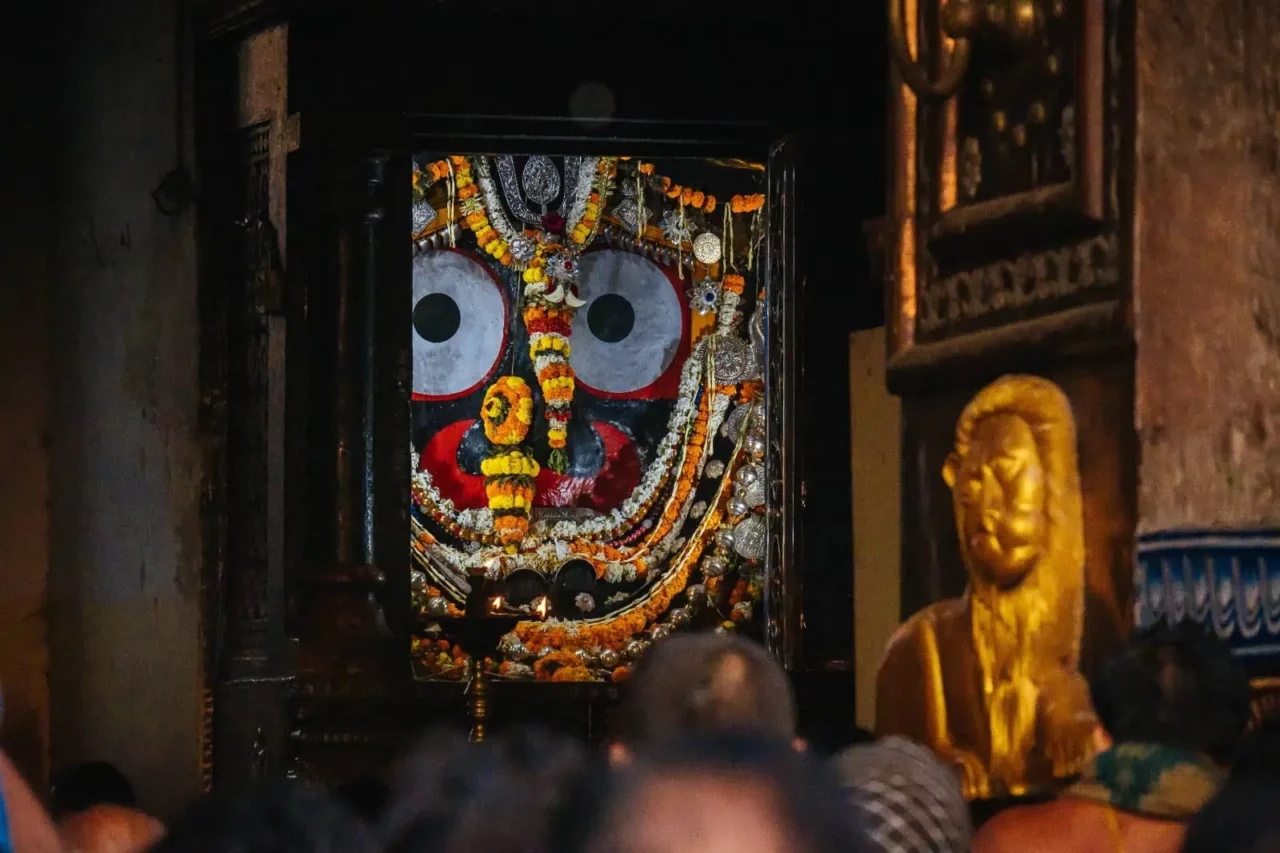
The Shree Jagannatha Temple in Puri follows a structured schedule for darshan (viewing of the deity), allowing devotees to partake in various rituals and offerings throughout the day. Understanding the temple’s darshan timings and entry protocols ensures a smooth and spiritually fulfilling experience for visitors.
Daily Darshan Timings:
- Morning Opening: The temple opens around 5:30 a.m. Post Mangal Arati, devotees can enter up to the Jagamohan for darshan until approximately 7:30/8 a.m., during the Besha ritual.
- Intermittent Closures: Darshan is unavailable for about 1 hour and 15 minutes post-Besha, during the Gopal Ballava Puja (roughly 8 a.m. to 9:15 a.m.).
- Mid-Morning to Noon: Post Gopal Ballav Puja, darshan resumes from the Naatamandir until the end of Sakaala Dhoopa Puja, around 11 a.m.
- Afternoon Darshan: Following Sakaal Dhoopa, entry up to Jagamohan is permitted until Bhoga Mandap Puja completion, around 1 p.m.
- Late Afternoon and Evening: Darshan is available between 2 p.m. and 5:30 p.m., and again post Sandhya Dhoopa till the Chandan Laagi ritual, approximately from 8 p.m. to 9 p.m.
Entry and Crowd Management:
- Lion’s Gate / Eastern Gate: This is the primary entry point for all devotees, with barricades in place for orderly movement.
- Exit Gates: The other three gates of the temple serve as exit points for devotees.
- Special Access: Local officials, Sevaks, and residents with ID may use any gate for entry and exit.
Understanding these timings and guidelines is crucial for a hassle-free visit to the Shree Jagannatha Temple, allowing devotees to immerse themselves in the sacred rituals and experience the divine presence of Lord Jagannatha.
Consider reading – 20 Must Visit Best Tourist Places in Odisha
Mahaprasad Avada at Jagannath Temple Puri
Mahaprasad Avada at the Jagannath Temple in Puri is not just a ritualistic offering; it represents a deep spiritual and cultural tradition integral to the temple’s daily practices. This sacred offering embodies the essence of devotion and culinary artistry, making it a significant aspect of the temple’s religious life.
Significance and Preparation:
- Essential Ritual: The offering of Mahaprasad is a vital component of the temple’s daily rituals, deeply entrenched in its religious and cultural ethos.
- Vegetarian Delicacy: Prepared using various ingredients and spices, Mahaprasad is strictly vegetarian, aligning with the temple’s spiritual principles.
- Temple Kitchen Practices: The Bhoga Mandap, the temple’s kitchen, is where this divine offering is prepared. It is cooked in a traditional clay oven or handi, adhering to age-old culinary methods.
Sacred and Divine Connotation:
- Blessed Offering: Mahaprasad is considered sacred and blessed by the deities, making it more than just food—it’s a divine blessing.
- Distribution Among Devotees: This holy offering is distributed to devotees and pilgrims visiting the temple, symbolizing the sharing of divine grace in the form of prasad.
Cultural and Spiritual Experience:
- Part of Temple’s Essence: The offering of Mahaprasad Avada is deeply embedded in the spiritual and cultural fabric of the Jagannath Temple.
- A Must-Experience for Visitors: For those visiting the temple, partaking in Mahaprasad Avada offers a unique glimpse into the temple’s rich traditions and is an integral part of the spiritual journey.
Mahaprasad Avada at the Jagannath Temple is a testament to the harmonious blend of spirituality and culinary heritage, offering a unique experience that transcends the ordinary and connects devotees with the divine.
Consider reading: 10 Famous Odisha Foods You Must Try
Puri Jagannath Temple Accommodation: Yatri Niwas & Nilachal Bhakta Niwas
Every year, millions of tourists from all over the world visit for recreation, pleasure, and devotion.
Keeping the needs of the devotees in mind, the Jagannatha Temple Administration has created “Nilachal Bhakta Niwas & Nilachal Yatri Niwas,” a brand new guesthouse located on the Grand Road and adjacent to the temple.
It is 60 kilometers from Bhubaneswar and a few minutes from the railway station, bus stop, and Puri Beach.
The guest house has 36 modern equipped A.C. rooms, 2 VIP Suites, 2 Triple Bedded A.C. rooms, 12 Non-Ac Rooms, 2 Triple Bedded Non-A.C. Rooms, 2 Six Bedded Dormitory, 2 Eight Bedded Dormitory,] Five Bedded Non-A.C. Rooms, and 5 Seven Bedded Non-A.C. Rooms.
The luxury of a guesthouse packed with benefits is available at an astonishingly low cost. Furthermore, by staying here, you make a significant contribution to the temple’s upkeep and development, as a significant portion of the guesthouse’s earnings will be donated to the temple as an offering.
You can book Jagannath temple accommodation online at the Shree Jagannath website.
7 Unexplained Mysteries and Puri Jagannath Temple Facts
Shree Jagannath temple in Puri has some unexplainable mysteries. Let’s explore one by one:
- The no-flying zone: In other parts of India, you may have seen birds perched on Jagannath temple walls or planes flying above them, but nothing flies above this temple. The site has been declared a no-fly zone, not by the state government, but by the divine powers of the temple. This phenomenon, which is unusual in India, has no explanation and remains a mystery.
- The flag that defies wind direction: Whether it’s a ship sailing in the wind or a simple piece of cloth, it always follows the wind’s direction. The flag atop of Jagannath temple, on the other hand, is an exception to this rule because it flies in the opposite direction of the wind with no scientific reasoning to back it up.
- The mystery of the Sudarshan Chakra: The chakra installed on top stands about 20 feet tall and weighs a tonne. The first question that arises in the absence of heavy machinery is how it was fitted so high with only manual intervention during that time period. The second is the architectural technique used to position the chakra, which is visible from any corner of the city and appears to face you regardless of your position.
- Silence of the waves: The Jagannath temple has four entrances, the main one being Singhadwaram. When you enter the temple through this door, you can clearly hear the sound of the waves, but once inside, you will no longer hear them. According to legend, it was Subhadra Mayi’s wish to have peace within the temple gates that was granted by the Lord.
- Temple structure: When sunlight falls on one part of the subject, it casts a shadow on the other, resulting in shade. This temple, on the other hand, is said to have no shadows at any time of day. It is still unknown and debatable whether it is an engineering marvel or a divine force.
- Climbing of the priest: Every day, a priest climbs the walls of Jagannath temple, which is about the height of a 45-story building. This is accomplished without the use of any protective equipment and would easily put any professional climber to shame. It is believed that if this is skipped even for a single day, the temple will be closed for 18 years! This ritual dates back nearly 1800 years.
- Reverse gear of the breeze: It is common knowledge that the wind from the sea blows toward land during the day and the wind from the land blows toward the sea during the evening in every other region of the world. The exact reverse occurs in Puri, defying the principles of geography!
Jagannath Temple Secrets
Jagannatha Temple is unique and has had secrets for thousands of years. Some interesting secrets are as below:
- The secret of the wooden deities: The wooden deities at Puri Jagannath Temple are said to be over a thousand years old, but their exact age and origin are still a mystery. The deities are carved from a single piece of wood and are believed to have divine powers and blessings.
- The secret of the chariots: The chariots used in the Raja Rathyatra festival at Puri Jagannath Temple are huge, intricately designed, and are said to be over a thousand years old. The chariots are pulled by thousands of devotees and are a sight to behold.
- The secret of the temple kitchen: The temple kitchen at Puri Jagannath Temple is known as the Bhoga Mandap, and is said to be one of the largest kitchens in the world. The kitchen is run by over a thousand cooks and is said to be able to feed over a million devotees every day.
- The secret of the temple rats: The temple rats at Puri Jagannath Temple are considered to be sacred, and are said to be the descendants of the original temple rats. The rats are fed and cared for by the temple priests and are considered to be a sacred part of the temple.
- The secret of the temple treasures: The temple treasures at Puri Jagannath Temple are said to be vast and valuable and include precious gems and jewels. The treasures are kept in a secret location and are said to be guarded by temple priests and devotees.
FAQs on Puri Jagannath Temple
What is the history of Jagannath Temple?
The history of Jagannath Temple dates back to the 12th century and was built by King Indradyumna, who was a devout devotee of Lord Jagannath. The temple was consecrated by the king and has undergone several renovations and expansions over the years.
What are the daily rituals at Jagannath Temple?
The daily rituals at Jagannath Temple include Mangal Aarti, Abakasha, Mailam, Gopala Ballabha, Dhupa, and Sandhya Aarti. The rituals are performed by the temple priests and are an essential part of the temple’s religious and cultural traditions.
What is Mahaprasad?
Mahaprasad is a sacred offering of food and other offerings to the deities at Jagannath Temple. The offering is considered to be sacred and holy and is distributed to the devotees and pilgrims who visit the temple.
What is the best time to visit Jagannath Temple?
The best time to visit Jagannath Temple is during the Rath Yatra festival, which is held in the month of June or July. The festival is a popular and important event at the temple and attracts a large number of pilgrims and tourists.
